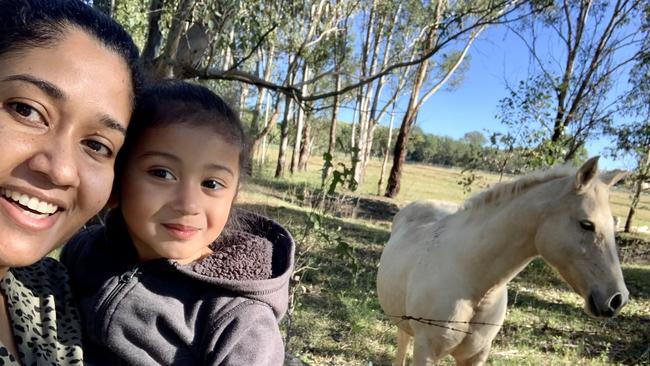Why La Nina will play havoc with pollen counts and your hay fever
Pollen levels smashed records last summer, leaving 4.6 million hay fever sufferers sniffling and sneezing. Here’s how to combat the seasonal sniffles.
SmartDaily
Don't miss out on the headlines from SmartDaily. Followed categories will be added to My News.
Pollen levels smashed records across Australia last summer, leaving 4.6 million hay fever sufferers sniffling and sneezing.
And experts are warning the third consecutive La Nina event hitting the nation now could put pollen production into overdrive again in eastern and northern Australia.
“We’re forecasting a possible above-average year again,” says Associate Professor Ed Newbigin, a plant biologist and co-ordinator of the Melbourne Pollen Count at the University of Melbourne.
According to Asthma Australia, Brisbane and Canberra experienced their worst season on record in summer 2022, Tasmania was double the average, Sydney recorded its highest levels for years, and Adelaide’s readings were twice the levels recorded in the previous three years.
Newbigin warns hay fever sufferers should be prepared for more of the same this spring and summer.
“In some parts of the country that is going to be realised but it won’t in others. Canberra is looking like it will have a big season again this year, as well as Brisbane.”
Hay fever, or allergic rhinitis, is a common allergic condition that can be seasonal or occur year-round and is caused by the nose or eyes coming into contact with allergens including pollens, dust mites, mould and animal dander. Symptoms include an itchy, runny or blocked nose, itchy or watery eyes, and frequent sneezing, but it can also cause headaches and facial pain, and it can impact sleep as well as increase the risk of ear infections in children and sinusitis in adults.

Hay fever also makes asthma worse in about 80 per cent of sufferers.
Victorians have already been warned to brace for a thunderstorm asthma event that could rival the deadly 2016 tragedy amid a “perfect storm” of conditions and increased risk after Covid.
“Poorly controlled hay fever is a major risk factor for thunderstorm asthma, which is severe acute airway symptoms following a thunderstorm, with high levels of pollen allergen in the air,” says Sydney GP Dr Penny Burns. “So, it is really important to take hay fever seriously.”
One way to manage symptoms is to minimise your exposure to allergens. For example, if pollens are causing your sniffles, stay indoors until after midday, especially if the pollen count is high, it’s windy and after thunderstorms.
“It’s not fully understood why some people get hay fever,” says Professor Mimi Tang, an immunologist allergist at the Murdoch Children’s Research Institute.
“But we know your genes and the environmental factors you are exposed to in early life, from early development in the womb through to the third year of life, play important roles.”

WHAT TO DO
Burns says taking an over-the-counter antihistamine such as Telfast is usually enough to ease mild symptoms, but if they become more severe see a GP.
“There are other medications to try, from combined intranasal antihistamine/corticosteroid sprays to decongestant sprays and tablets,” she says.
“If your symptoms don’t respond to other therapies you can also be referred to a clinical immunologist or allergy specialist.”
IT’S DEBILITATING
Caroline La Rose started experiencing hay fever symptoms when she moved from Mauritius to Australia in 2007.
“Spring is when I’m most affected, but I experience hay fever year-round,” she says. “The worst symptoms are itchy and watery eyes and sneezing fits.”
The 39-year-old mum of two from Sydney says the symptoms are debilitating.
“If I have plans on a day when I have hay fever, nine times out of 10 I’ll have to cancel,” she says. “The symptoms also affect my kids’ lives because I’m sometimes unable to do things with them.”

La Rose puts a preventative plan into action for the first two weeks of spring, with or without symptoms.
“I find that the steam from taking long hot showers helps alleviate symptoms,” she says. “Sleeping it off when I can helps, along with staying indoors with the windows shut and without using fans or airconditioning.”
HOME HELP
Tips for tackling hay fever at home
• Wash sheets and couch covers at a temperature of at least 55C as it may kill dust mites.
• Dry bed linen and clothes indoors when the pollen count is high.
• Wear a mask and sunglasses outdoors.
• Use an air purifier to filter air, including pollutants and allergens.
• Avoid having plants at home that release pollen.
• Vacuum with a HEPA filter to trap tiny allergens.
Source: Telfast spokesman Philip Crespin
Originally published as Why La Nina will play havoc with pollen counts and your hay fever


